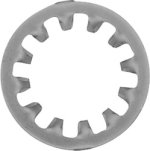Driftwood Johnson
New member
Howdy
I have completely given up buying new S&W revolvers because of the lack of quality. The last S&W revolver I bought was in 2015. A Model 686-6 that had QC issues.
Your photo did prompt me to look down the bore of my 686 however, and the rifling is spotless. I can see a slight hint of drag marks in the grooves, indicating to me that the barrel was rifled either using a broach or a button.
I did buy a S&W 9mm 1911 PRO semi-auto this year that I have been very pleased with. I just took a look down the bore and the rifling is spotless. There appears to be a hint of drag marks in the grooves, indicating to me that this barrel was also rifled either with a broach or button.
I have no idea how those crazy tool marks could have been left in the OP's bore, particularly down in the grooves.
I guess I am not up on the latest in rifling techniques, I never even heard of ECM rifling. Just a classic guy who likes old Smiths.
Smith and Wesson has definitely cut down on the in process inspection steps they used to have. Look on the frame under the grips on an old Smith and you will see several inspector's marks, each stamped there after an in process inspection. It appears they are content to accept the cost of returns rather than pay in process inspectors.
I have completely given up buying new S&W revolvers because of the lack of quality. The last S&W revolver I bought was in 2015. A Model 686-6 that had QC issues.
Your photo did prompt me to look down the bore of my 686 however, and the rifling is spotless. I can see a slight hint of drag marks in the grooves, indicating to me that the barrel was rifled either using a broach or a button.
I did buy a S&W 9mm 1911 PRO semi-auto this year that I have been very pleased with. I just took a look down the bore and the rifling is spotless. There appears to be a hint of drag marks in the grooves, indicating to me that this barrel was also rifled either with a broach or button.
I have no idea how those crazy tool marks could have been left in the OP's bore, particularly down in the grooves.
I guess I am not up on the latest in rifling techniques, I never even heard of ECM rifling. Just a classic guy who likes old Smiths.
Smith and Wesson has definitely cut down on the in process inspection steps they used to have. Look on the frame under the grips on an old Smith and you will see several inspector's marks, each stamped there after an in process inspection. It appears they are content to accept the cost of returns rather than pay in process inspectors.
Last edited:

